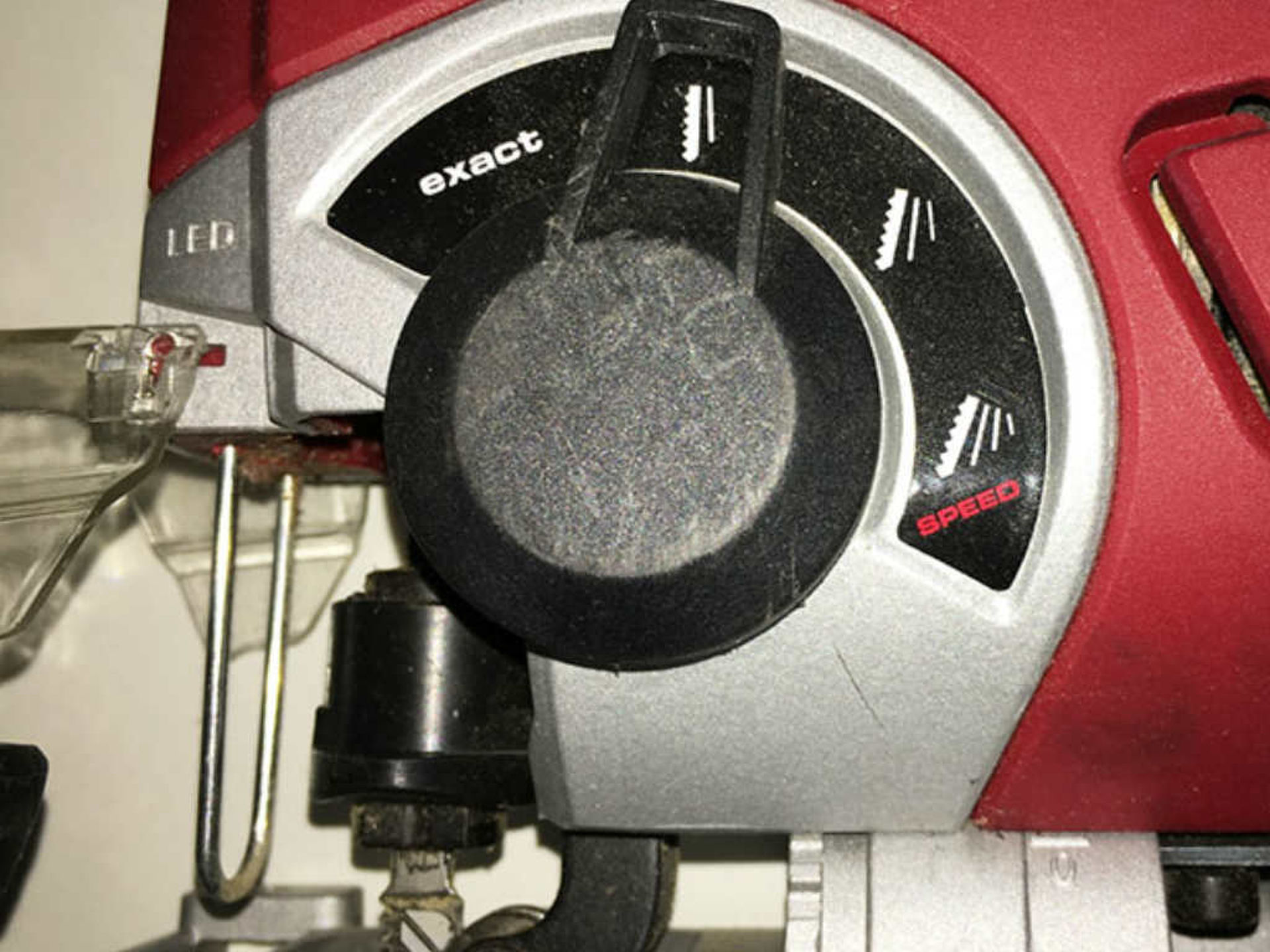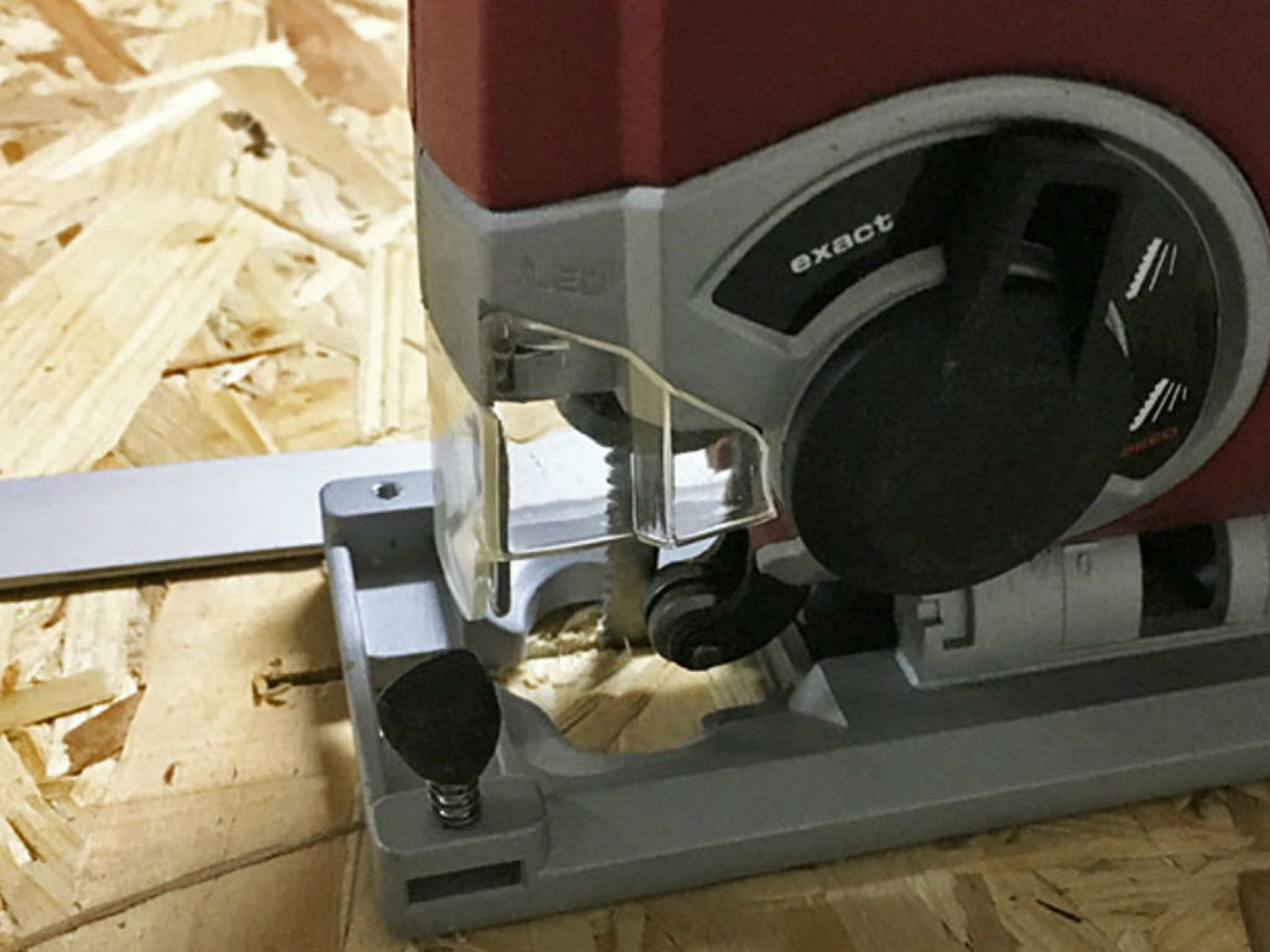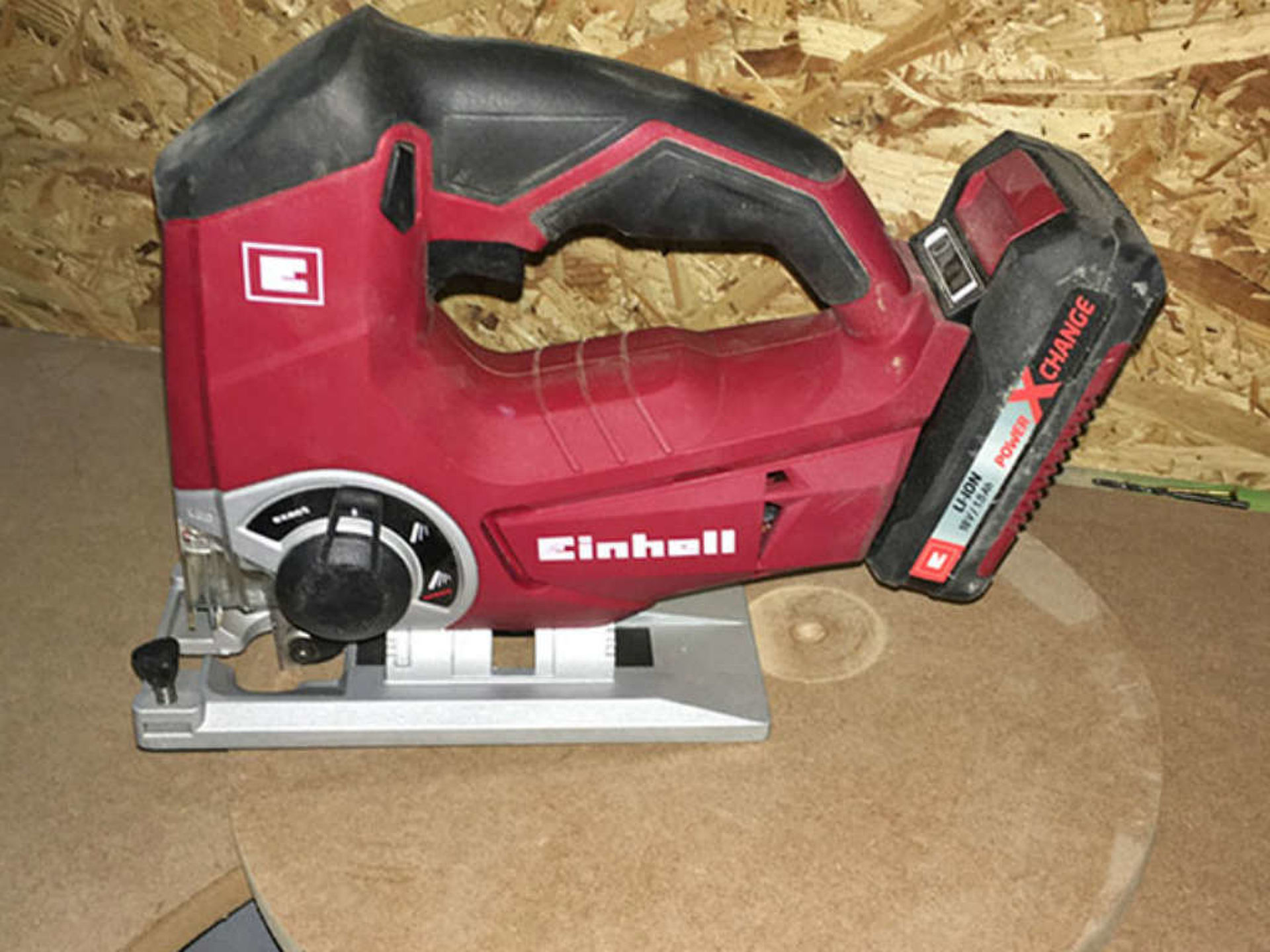Working with the Jigsaw
As a rule, the jigsaw together with the cordless screwdriver is one of the first tools that one gains at the beginning of the DIY career. But most of them do not know much about this machine. Which saw blade is used for which tasks? How do you do a curve cut and what helps really to saw straight cuts? This article is intended to provide a brief overview of working with a jigsaw and may also give you one or the other new trick.
When do I use which blade?
For jigsaws a variety of different saw blades exist in the trade. These can be changed in a modern jigsaw without tools within a few seconds, so there is no reason which argues against swapping saw blades between different applications. Jigsaw blades differ by several points. These include the thickness and the length and also the depth of the saw blade. On the other hand, the number, the distance and the setting of the individual saw teeth. These combinations alone result in a large number of different saw blades, all of which have their according application field


A small overview
To make the whole thing a little more tangible, I have summarized the most common saw blades for the jigsaw in a table:
| Designation | Application |
|---|---|
| S 75/2,5; HS 75/2,5 bi | Softwood, hardwood, coated chipboard, veneered blockboard, soft plastics, acrylic and plexy glass |
| HS 75/2,5 bi R | Just as above, but also suitable for laminate |
| S 75/4 FS & FSG ;S 105/4 FSG; S 145/4 FSG | Same as position 1, but also suitable for coated chipboard |
| S 155/W | For sawing insulating materials |
| R 54 G | Reinforced & Fiber-strengthened plastics, composites, iron, steel, glass, bricks, ceramics |
| HS 75/3 bi | Soft plastics, acrylic, Plexiglas, Eternit |
| S 50/1,4 K; HS 75/4 bi | Softwood, hardwood, chipboard coated, veneer board, soft plastics, acrylic, Plexiglas |
Different Designations
At first glance, the names of the saw blades seem confusing. The system is, once you understand it, but quite simple.
S 75/2,5 bi = 75 mm toothed length, 2,5 mm tooth spacing, Bi‐Metall
S 75/4 K = 75 mm toothed length, 4 mm tooth spacing, Kurvensägeblatt
S 75/4 FS = 75 mm toothed length, 4 mm tooth spacing, 90° Schnitt
What is the Effect of Adjusting the Pendulum Motion?
The pendulum motion of a jigsaw is a frequently underestimated and forgotten possibility for the power‐saving operation of the machine. The pendulum motion results from two different axes on which the saw blade moves. First, the classic stroke, the up and down movement of the saw blade. On the other hand, the pendulum motion via a roller, positioned behind the saw blade, which moves the blade slightly back and forth, similar to a pendulum. The pendulum motion minimizes the force required to be applied when sawing in sawing direction. However, too much set pendulum motion also ensures more eruption at the interface. If you configure this option wisely, you will quickly find the right mediocrity between energy‐saving and tear‐free work. As a rule of thumb, the harder and thicker the material to be sawn, the more you can choose the pendulum motion.

Aids for straight cuts
Anyone who has ever tried to saw a straight cut freehand, was almost certainly dissatisfied with the result. Due to the small saw blade compared to a foxtail, even the smallest changes in the angle immediately affect the interface. Every wobble on the handle of the jigsaw immediately generates a wave in the cross section. To avoid this, it is already sufficient to attach a straight piece of wood or even better a metal bar with two screw clamps parallel to the saw frame. Now you can guide the jigsaw along this helper. Changes in attitude are now largely intercepted.


Internal Cuts
Especially with cutouts in the middle of the workpiece, the jigsaw has its advantages. With a drill bit that is only slightly larger than the depth of the saw blade, drill a hole in the part to be sawn out as close as possible to the saw line. In this hole you now put the saw blade and start with your cut.

Avoid tears at the cutting edge
In order to minimize or completely eliminate tears at the surface, there are several options. On the one hand, the selected saw blade should be selected as finely as possible for the particular application. Fine teeth logically separate less material at once. In combination with the right pendulum motion, the result can already be seen here. If you want to saw veneered materials, then it may make sense to split the surface in advance using a carpet knife based on the planned interface. This takes the veneered top its tension and thus minimizes the splintering by the ascending saw blade. If your jigsaw has an adjustable guide, it should always be as close as possible to the blade. As a result, you relieve the saw blade of lateral forces which prevents bleeding of the cut and lateral tears.

OHS
As with all cutting tools, it is also important to protect the eyes from the jigsaw. A flying splinter or even a broken saw blade can very quickly lead to serious injuries to the eyes. In addition to wearing safety goggles, putting on hearing protection is recommended.







